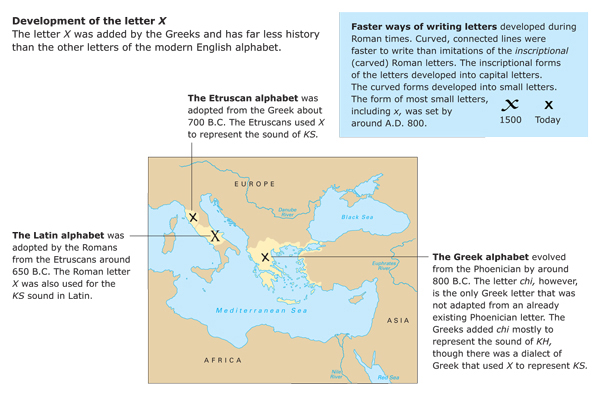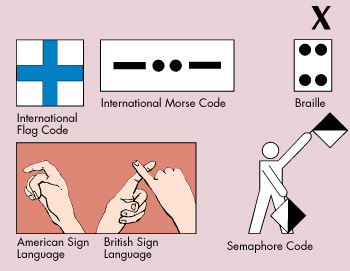X is the 24th letter of the alphabet used for the modern English language. It is also used in a number of other languages, including French and Spanish.

In English, the letter X usually represents a sequence of the K sound and the S sound, as in extra and fox. Between vowels, X can have the sound GZ, as in exist and exam. The letter X sometimes represents KSH, as in luxury, or GZH, as in luxurious. At the beginning of a word, X nearly always represents the Z sound, as in xylophone and xerophyte.
The history of X is different from that of the other letters in the modern English alphabet. All of the other letters of the alphabet can be traced to an Egyptian hieroglyph or to a letter that itself evolved from a hieroglyph. Certain Egyptian hieroglyphs were adapted into letters for Semitic languages, including Phoenician. The ancient Greeks adapted the Phoenician alphabet into their alphabet. The Etruscan alphabet evolved from that of ancient Greece, and the alphabet of ancient Rome was adapted from the Etruscan. The alphabet of modern English was adapted from the Roman alphabet.
X, however, is a letter that does not follow this pattern. The ancient Greeks added the letter X, which they called chi, to the alphabet they had adapted from the Phoenicians. In most dialects of ancient Greek, chi represented the KH sound (K with a puff of air after it). The Etruscans adopted the Greek alphabet about 700 B.C. They adopted the alphabet from a dialect of Greek that used chi to represent the sound KS. By around 650 B.C., the Romans adopted the alphabet from the Etruscans, and they also used the letter for the KS sound.
See also Alphabet .

